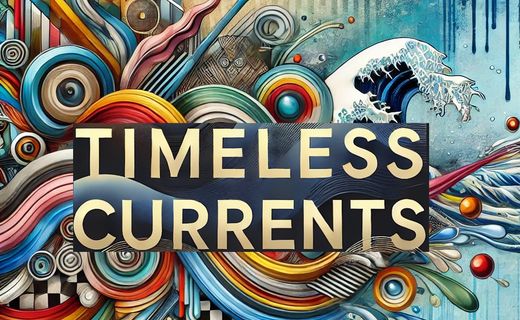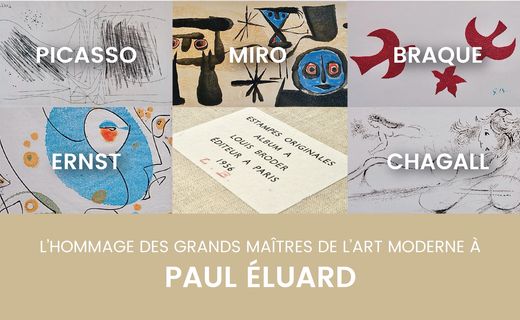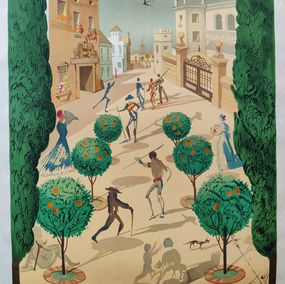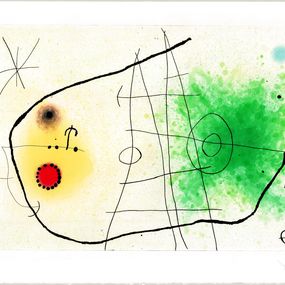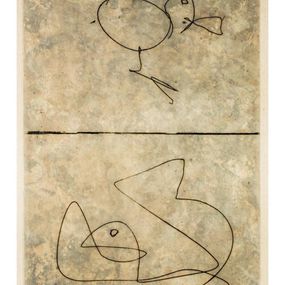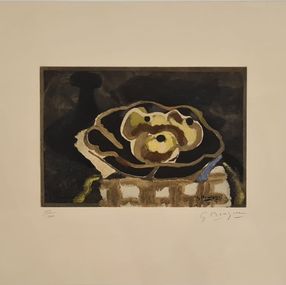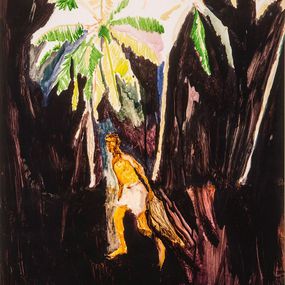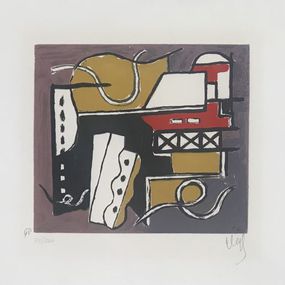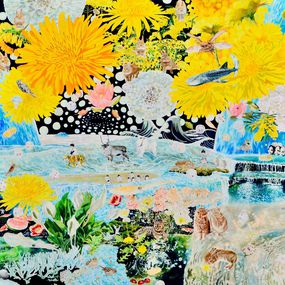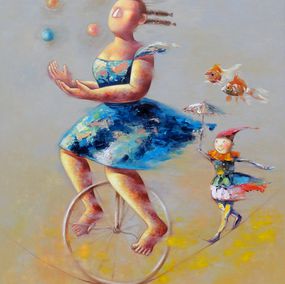

It took me my whole life to learn how to draw like a child.
Biography
« To me there is no past or future in art. If a work of art cannot live always in the present it must not be considered at all », it is surely what guaranteed Pablo Picasso his universal and timeless recognition! Inspired by his passions of a given moment, and pushing the boundaries of art, he is considered among the most influential artists of the 20th century. His paintings, sculptures, prints and ceramics are absolutely key pieces in the museums of modern art of the world and have influenced some of the greatest artists. Born in 1881 in Malaga, Pablo Picasso was a real art prodigy. At the age of 8, he painted his first oil paintings, at 15 he entered Barcelona's art school, at only 19, he represented Spain the Exposition Universelle in Paris with « Last Moments ».
Following that, Picasso moved to Paris and discovered Toulouse-Lautrec, Degas, Gauguin and Cézanne. The suicide of his friend Casagemas, with whom he lived in Paris, had a profound effect on him and his sadness permeated all his canvases at the time, this was Picasso's « blue period ». From 1905, his melancholy and blue tones were replaced with joy and rose hues, when the painter fell in love with Fernande Olivier and moved to Bateau Lavoir, where he met artists and writers of the time: Matisse, Apollinaire, Jean Cocteau… this was his « rose period ».
From 1906, his obsession with a more complete representation of space inspired him, along with Georges Braque, to decompose objects and recreate them again on the canvas, in the manner of a collage, to show all facets of them. It was the emergence of Cubism that brought back into play the notion of perspective in art. His work « Les Demoiselles d'Avignon », breaking completely with all the codes of the era, sparked debate and would change, in an irreversible way, the rules for artistic creation in the 20th century.
Judging the image to be complicated to read, he abandoned Cubism in 1915 in favour of more traditional portraits, until the Spanish Civil War, when he painted his largest painting: « Guernica », depicting the horror of the Spanish Civil War and marking the beginning of his political engagement.
Picasso died in 1973 in Mougins, leaving behind me a life rich in amorous passions and moral commitments, permeating his work and marking the history of art indelibly. His work is omnipresent in all the largest modern art collections: at the Musée Picasso in Paris, at MoMA in New-York, in the Museo Reina Sofia and many others...
In 2024, the art world continued to celebrate the enduring legacy of Pablo Picasso, the renowned Spanish painter and sculptor. A notable exhibition, "Picasso and Paper", was held at the Cleveland Museum of Art, showcasing nearly 300 works that explored Picasso's innovative use of paper across various mediums, including collages and drawings. This exhibition offered a comprehensive look into Picasso's creative process and his experimentation with materials.
Looking ahead, 2025 promises significant events honoring Picasso's artistic contributions. From February 14 to June 29, 2025, the Atelier des Lumières in Paris will host an immersive exhibition titled "Picasso, Art in Motion". This exhibition aims to delve into Picasso's eclectic and abundant universe, highlighting his relentless energy and constant reinvention of art through a collection of his works, photographs, and videos. Visitors can expect to experience a dynamic journey through various phases of Picasso's career, from his early works to his later masterpieces.
Nationality
Categories
Artistic movements
Themes
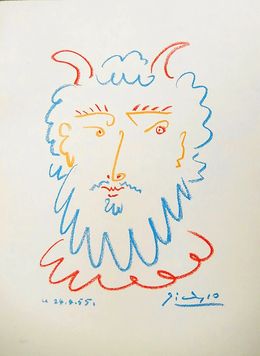
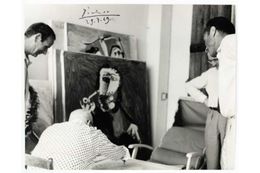
Pablo Picasso
Photography - 23.5 x 29.5 x 1 cm Photography - 9.3 x 11.6 x 0.4 inch
€3,500
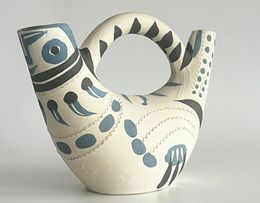

Pablo Picasso
Sculpture - 41.9 x 41.9 x 1.3 cm Sculpture - 16.5 x 16.5 x 0.5 inch
€17,610
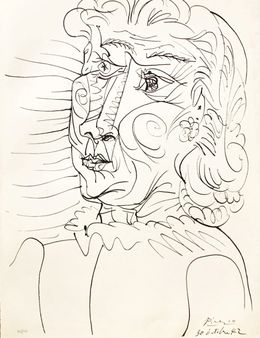
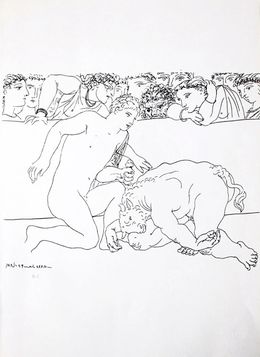
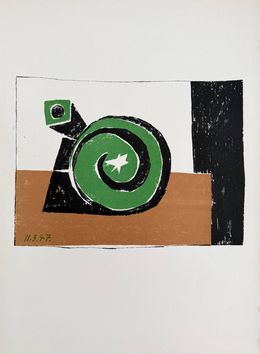
Pablo Picasso
Print - 44.5 x 33.5 x 0.1 cm Print - 17.5 x 13.2 x 0 inch
€1,500
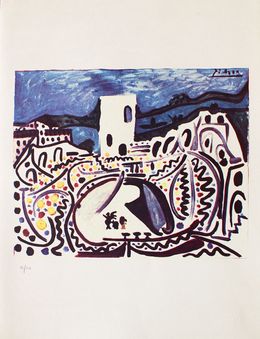
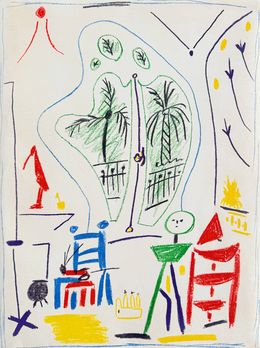
Pablo Picasso
Print - 44.5 x 33.5 x 0.1 cm Print - 17.5 x 13.2 x 0 inch
€1,500
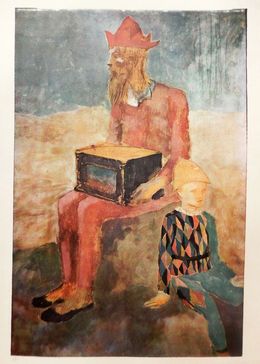

Pablo Picasso
Print - 33.02 x 49.21 x 1 cm Print - 13 x 19.4 x 0.4 inch
€16,173
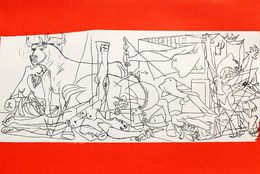
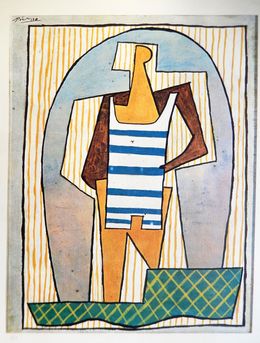
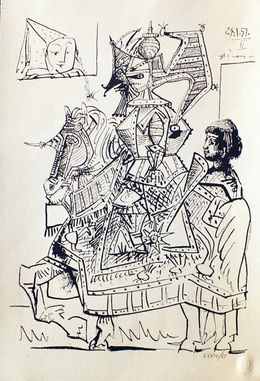
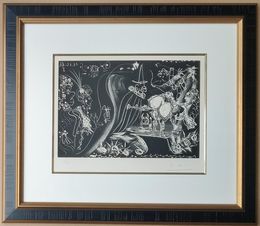
Pablo Picasso
Print - 22.5 x 32.5 x 0.1 cm Print - 8.9 x 12.8 x 0 inch
€14,800
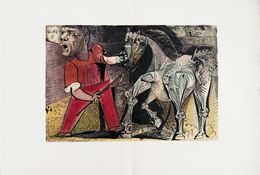


Pablo Picasso
Print - 66 x 50 x 0.1 cm Print - 26 x 19.7 x 0 inch
€9,878
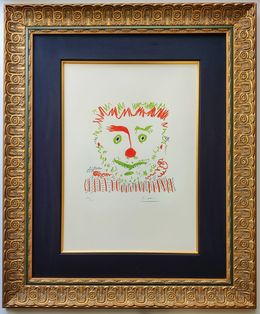

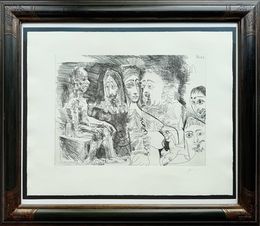
Pablo Picasso
Print - 45.5 x 56 x 0.1 cm Print - 17.9 x 22 x 0 inch
€33,500
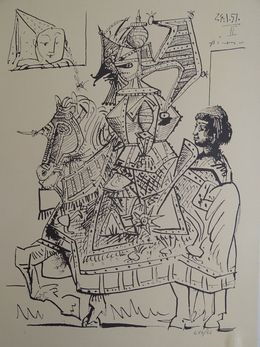
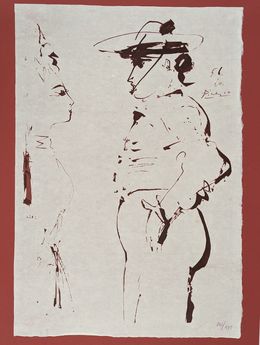
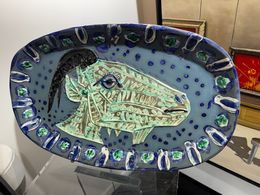
Pablo Picasso
Design - 31 x 51 x 3 cm Design - 12.2 x 20.1 x 1.2 inch
€23,200

Pablo Picasso
Print - 48.5 x 36 x 0.2 cm Print - 19.1 x 14.2 x 0.1 inch
€1,100


Pablo Picasso
Print - 22 x 31.75 x 0.2 cm Print - 8.7 x 12.5 x 0.1 inch
€10,000
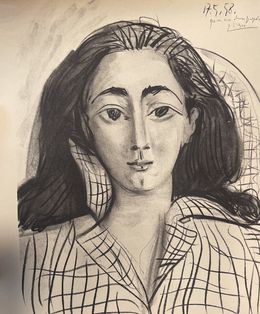
Pablo Picasso
Print - 29.5 x 27 x 0.1 cm Print - 11.6 x 10.6 x 0 inch
€6,000
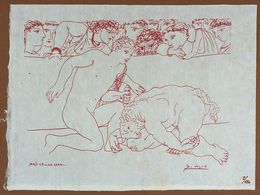
Pablo Picasso
Print - 32 x 43 x 0.2 cm Print - 12.6 x 16.9 x 0.1 inch
€1,200
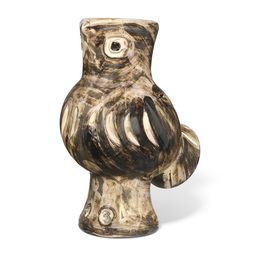

Pablo Picasso
Sculpture - 30.5 x 38.1 x 2.5 cm Sculpture - 12 x 15 x 1 inch
€35,940
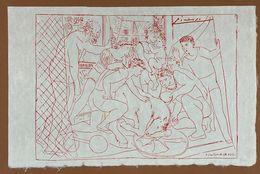
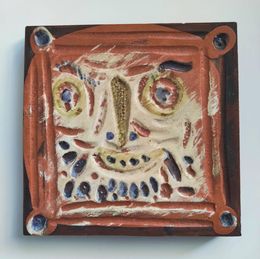
Pablo Picasso
Sculpture - 17.2 x 17.2 x 2 cm Sculpture - 6.8 x 6.8 x 0.8 inch
€8,900
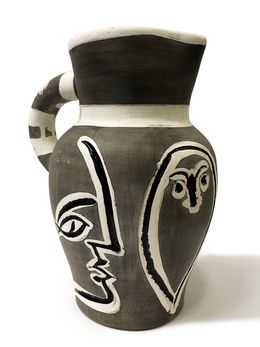
Pablo Picasso
Design - 27.9 x 25.4 x 17.8 cm Design - 11 x 10 x 7 inch
€28,392

Pablo Picasso
Design - 32 x 22 x 16 cm Design - 12.6 x 8.7 x 6.3 inch
€30,549

Pablo Picasso
Print - 31.8 x 38.1 x 3.8 cm Print - 12.5 x 15 x 1.5 inch
€16,173
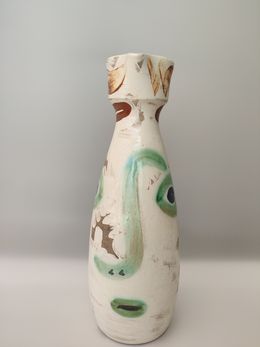
Pablo Picasso
Sculpture - 30.5 x 8.5 x 8.5 cm Sculpture - 12 x 3.3 x 3.3 inch
€19,800
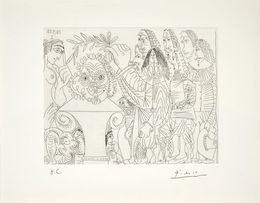
Pablo Picasso
Print - 20.5 x 26.7 x 1 cm Print - 8.1 x 10.5 x 0.4 inch
€26,500
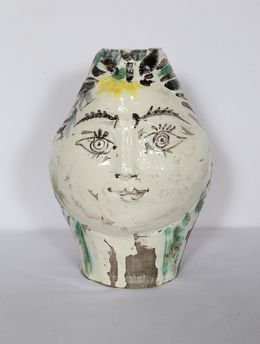
Pablo Picasso
Design - 22.9 x 14 x 15.2 cm Design - 9 x 5.5 x 6 inch
€53,909
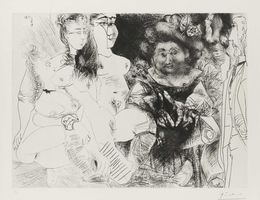
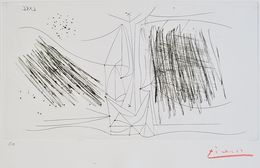
Pablo Picasso
Print - 32 x 50 cm Print - 12.6 x 19.7 inch
€17,500

Pablo Picasso
Design - 14 x 23 x 10 cm Design - 5.5 x 9.1 x 3.9 inch
€11,800

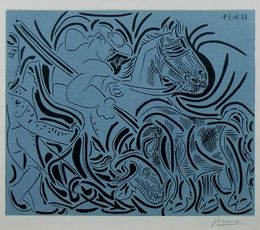

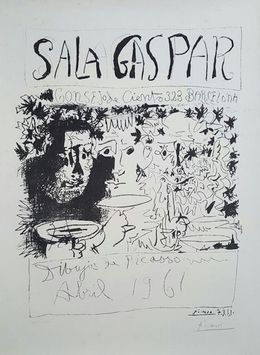

Pablo Picasso
Design - 25.5 x 25.5 x 2 cm Design - 10 x 10 x 0.8 inch
€13,500


Pablo Picasso
Design - 25.5 x 33.5 x 1 cm Design - 10 x 13.2 x 0.4 inch
€36,000
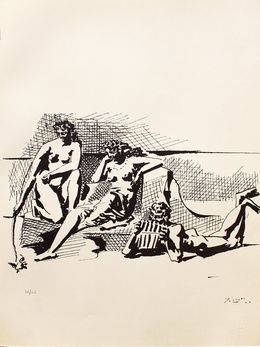
Pablo Picasso
Print - 49 x 36 x 0.5 cm Print - 19.3 x 14.2 x 0.2 inch
€800
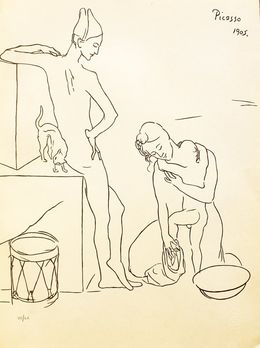
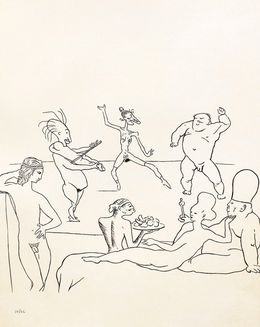
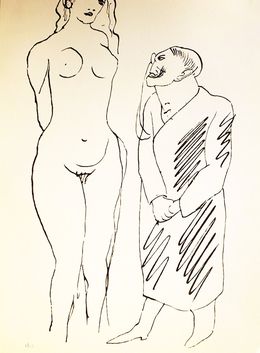
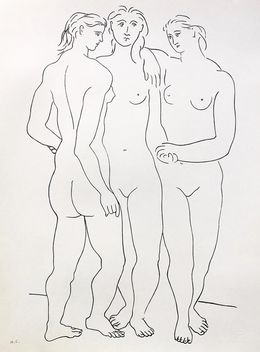
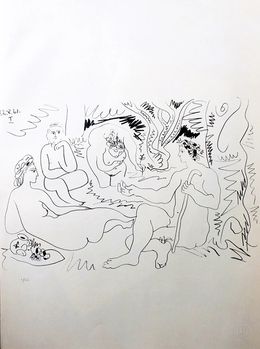

Pablo Picasso
Print - 40 x 50 x 2 cm Print - 15.7 x 19.7 x 0.8 inch
€2,400
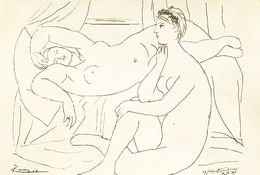
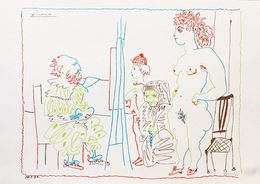
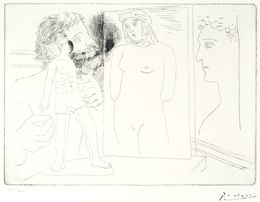
Pablo Picasso
Print - 22.5 x 29 x 1 cm Print - 8.9 x 11.4 x 0.4 inch
€6,500
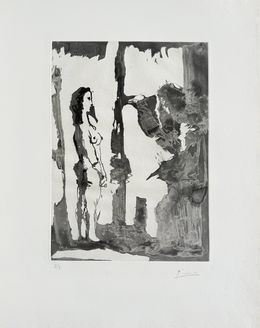
Pablo Picasso
Print - 57.5 x 46 x 0.1 cm Print - 22.6 x 18.1 x 0 inch
€14,500





